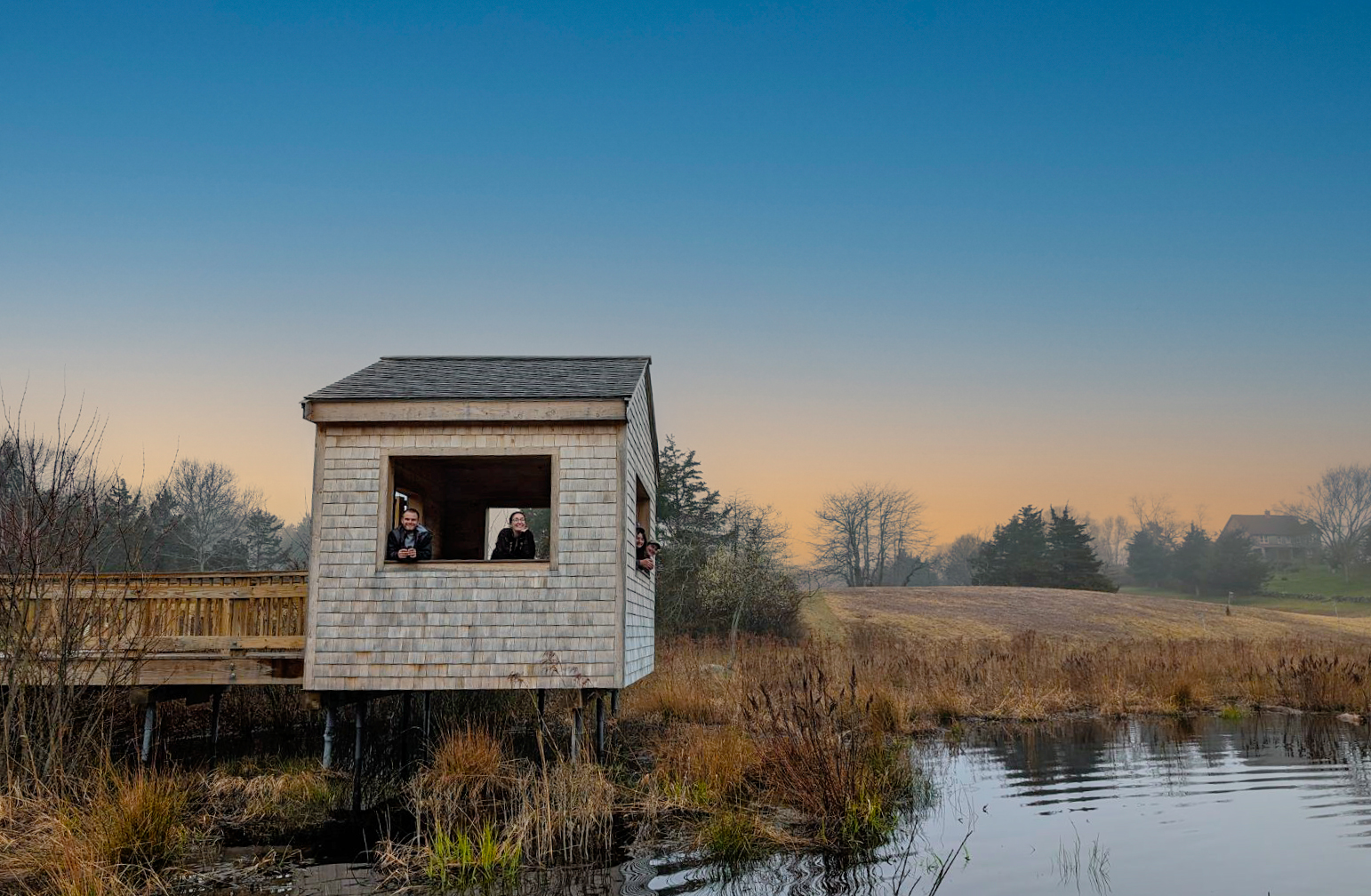Although we’re disappointed that we’re currently unable to fully staff our banding operation this spring due to the COVID-19 pandemic, we are excited about two new projects underway to better our understanding of wildlife at our Plymouth headquarters property. These two new monitoring projects will allow us to continue to add data to our 50+ years of bird and wildlife research.
Nesting Box Monitoring – From mid-April to mid-August, the bird activity surrounding our Holmes Farm nesting boxes (birdhouses) is a highlight. Between the aeronautics of the Tree Swallows and the warming warble of the neighborhood Eastern Bluebirds, the area is alive with activity. Manomet is managing these meadows for pollinators and other insects (bird food!), and although we often stop and admire the spectacle, the landbird team hasn’t had a chance to devote more time to observing how the nesting birds are being affected.
With banding operations limited, this spring and summer we’ll begin regularly monitoring our nesting boxes to see which species prefers which box, nesting and feeding habits and, ultimately, whether each box’s tenants successfully raise young. We hope that over time our continued management of the habitat on-site will be reflected in the success rate of our summer residents. To this point we have little knowledge of how many broods of Tree Swallows and bluebirds our property can support, as well as what other species may be using the boxes. Through our regular monitoring every two weeks, we expect to learn this and more.
Gray Treefrog Research – As we continue to manage and restore the wetlands on the Holmes Farm, we are eager to see how the local amphibian populations respond. Last year, the sheer number of amphibians using our wetlands to breed was staggering; many nights the chorus of Spring Peepers, Gray Treefrogs, and American Toads was deafening! I think it’s safe to say the most charismatic species we encountered in greater numbers was the Gray Treefrog (Hyla versicolor). In the late summer and early fall, we encountered these fantastic acrobats all over the property, many of which were young from that year. This led Alan Kneidel and myself to think about how we can sample the treefrog population in a scientific manner.





 Back to all
Back to all

